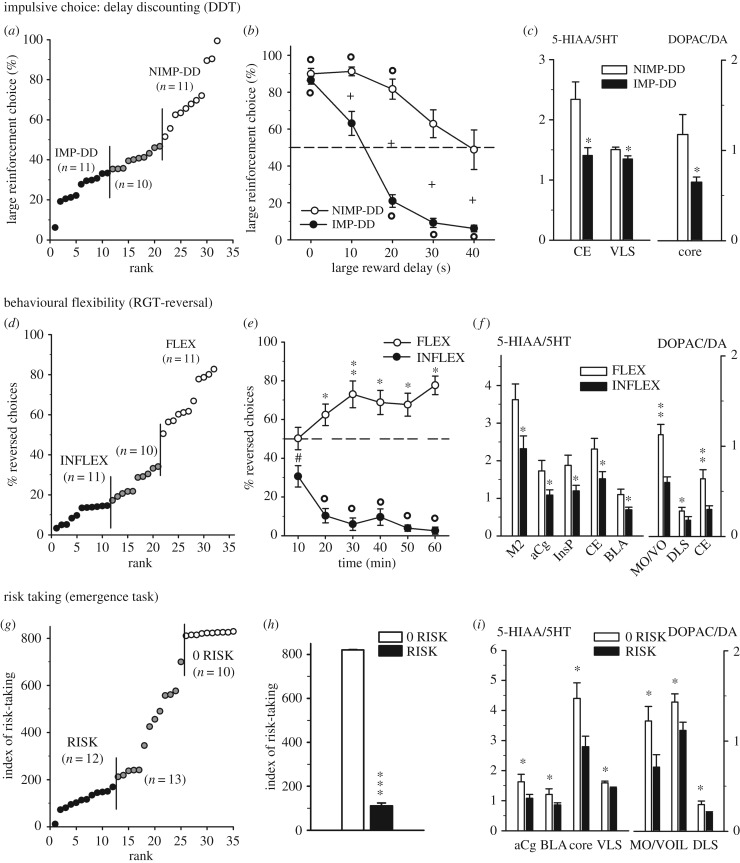Figure 2.
Inter-individual differences in impulsive/compulsive actions and monoamines turnovers at rest. The figure reports the inter-individual differences in the DDT (a), the rat gambling task (RGT-reversal, d) and the emergence task (g), the mean behavioural performances in subgroups for each task (b,e,h) and the corresponding regional changes of serotonergic and dopaminergic turnovers (mean ± s.e.m.) measured across 20 brain regions (c,f,i). In the DDT (a), impulsive choice was reflected by the mean percentage of choice for the large reinforcement when a delay (from 10 to 40 s) occurs, highlighting impulsive (IMP-DD, scores <35%) and non-impulsive behaviour (NIMP-DD, scores >53%); (b) Percentage choice of the two groups for the large reinforcement according to the length of the delay before obtaining it. Comparisons with chance level (50%, dotted line): significant differences with chance for scores above or below 50% show a preference for the large or the small reward respectively. Flexibility index in the RGT-reversal (d) showed inflexible (INFLEX) and flexible behaviour (FLEX); (e) time-course of reversed choice percentage in the RGT-reversal task for FLEX and INFLEX. Dotted line indicates 50% level (no preference). The index of risk-taking in the emergence task (g) showed risk-prone (RISK, scores <170) and risk avoiders (NORISK, scores >810); (h) Mean values of the risk-taking index for RISK and 0RISK (s). °p < 0.001; **p < 0.01; *p < 0.05 (Student's t test).

